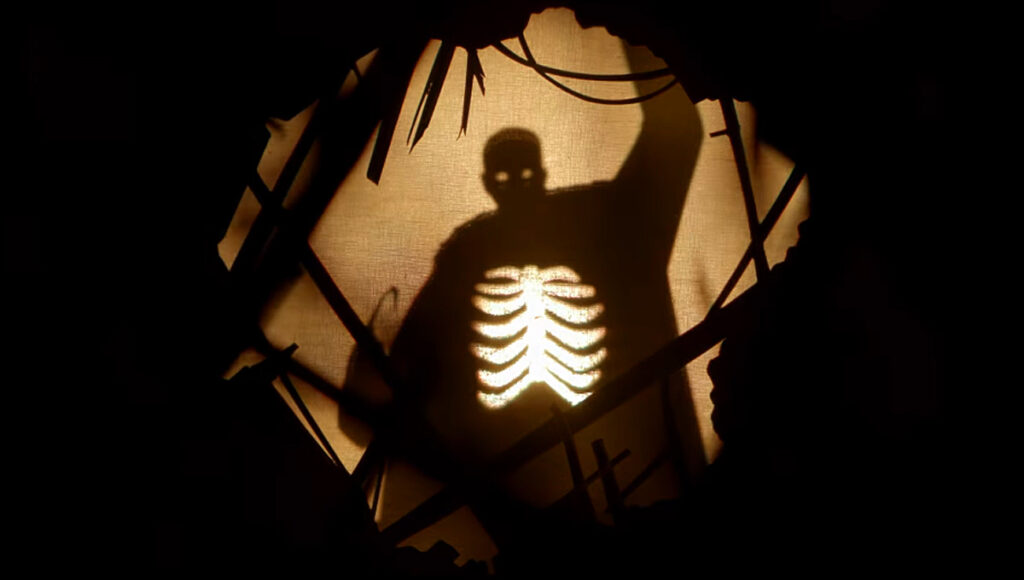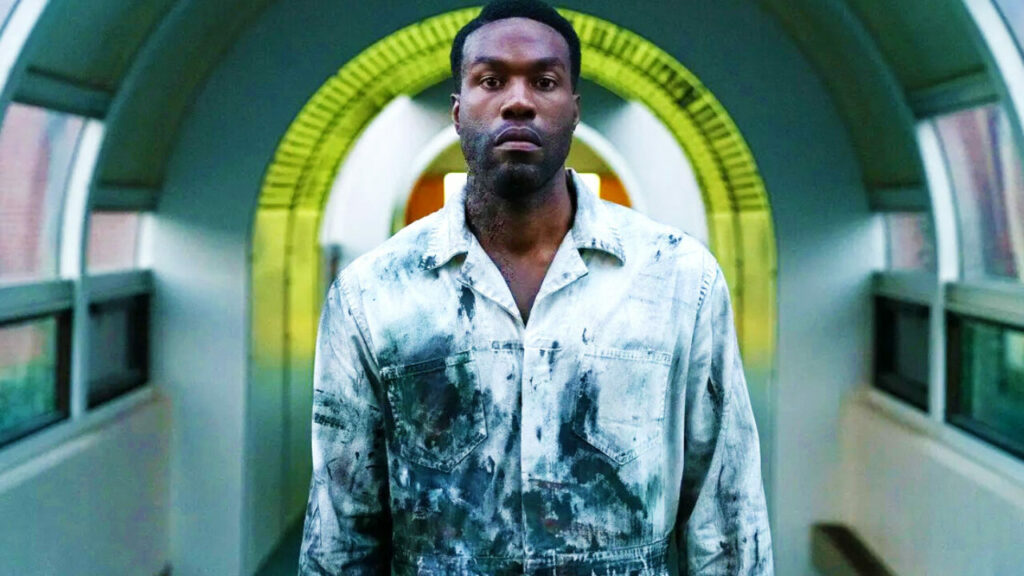Nia DaCosta and Jordan Peele’s Candyman follows the 1992 film of the same name, updating the urban legend for 2021. The story follows the character of Anthony McCoy (Yahya Abdul-Mateen II), a struggling artist who finds inspiration from the macabre story of Candyman and the deaths surrounding the legend. As Anthony finds himself more connected than ever to the history of the urban legend, it becomes increasingly clear that Candyman may not be just a story…
The film’s artistic direction is both poignant and unique. Often, shadow puppets are used to tell different parts of the story, a choice which ensures the viewer stays unsettled – the janky movements of the puppets emphasising the uncanny vision – but also exploring stories, how they’re told and remembered. There is also an emphasis on the use of mirrors and reflections – very fitting to the story itself – and often has you feeling off-kilter.

Nia DaCosta’s artistic direction in Candyman is just as confidently clear as Peele’s: the not quite there focus on the reflections, the wide angle shots and grotesque close ups that position you as both distant observer and as one intimately and disgustingly close to the violence.
The acting within this film is incredible. Abdul-Mateen II plays the traumatic descent into this uncertain, uncanny madness brilliantly. You feel for his fear and are equally terrified of what will come next. Teyonah Parris, playing Brianna Cartwright, is the confident and powerful woman who supports her loved ones through severe mental health struggles, to her own detriment. Other highlights are Nathan Stewart-Jarett, who plays Troy Cartwright and provides both the comic relief and emotional heart of the film; as well as Michael Hargrove, the titular Candyman, a character who is terrifying yet tinged with undeniable humanity. Fans of the original will also enjoy the cameo return of Tony Todd.
This modern sequel to continues to consider the same socio-political and cultural implications of intergenerational trauma in African-American communities (and in many ways, any place where systemic racism thrives). The figure of the Candyman is many things, but always born from one thing – trauma and injustice that can never be forgotten, even if there are those who would prefer it that way. The original Candyman – discussed in the 1992 original – is a man called Daniel Robitaille, who in the 1880s made the life-ending mistake of falling in love with a white woman.

By embodying the Candyman and returning to the world in one form or another ensures that injustice is never forgotten. This idea is emphasised throughout the film via discussions of all the people who became part of the urban legend. The use of the shadow puppets at this point to discuss and display these injustices is both a clever way not to exploit Black suffering, yet still emphasise the horror of it all. In particular, the story of Emmett Till threaded within this context serves to ground the film in the reality American history.
Memory is implicitly woven through such explorations of trauma and racism: as the Candyman says in both the 2021 and 1992 stories, “Tell everyone”. The horrors perpetuated by the Candyman ensures these stories continue to be told and the innocent victims are remembered, long after they have passed. As William Burke (Colman Domingo) aptly reminds us, there is power in memory. There is power in stories.
Candyman isn’t just a horror movie about a nightmarish creature that hides in reflections – although it does succeed in keeping its audience on edge the entire way through. It is a difficult and uncompromising reflection of our own society, posing questions and telling stories that will continue to haunt the viewer. With fantastic acting, wonderful creative direction and an incredible score, Candyman is unmissable.
Candyman is out in cinemas now.
